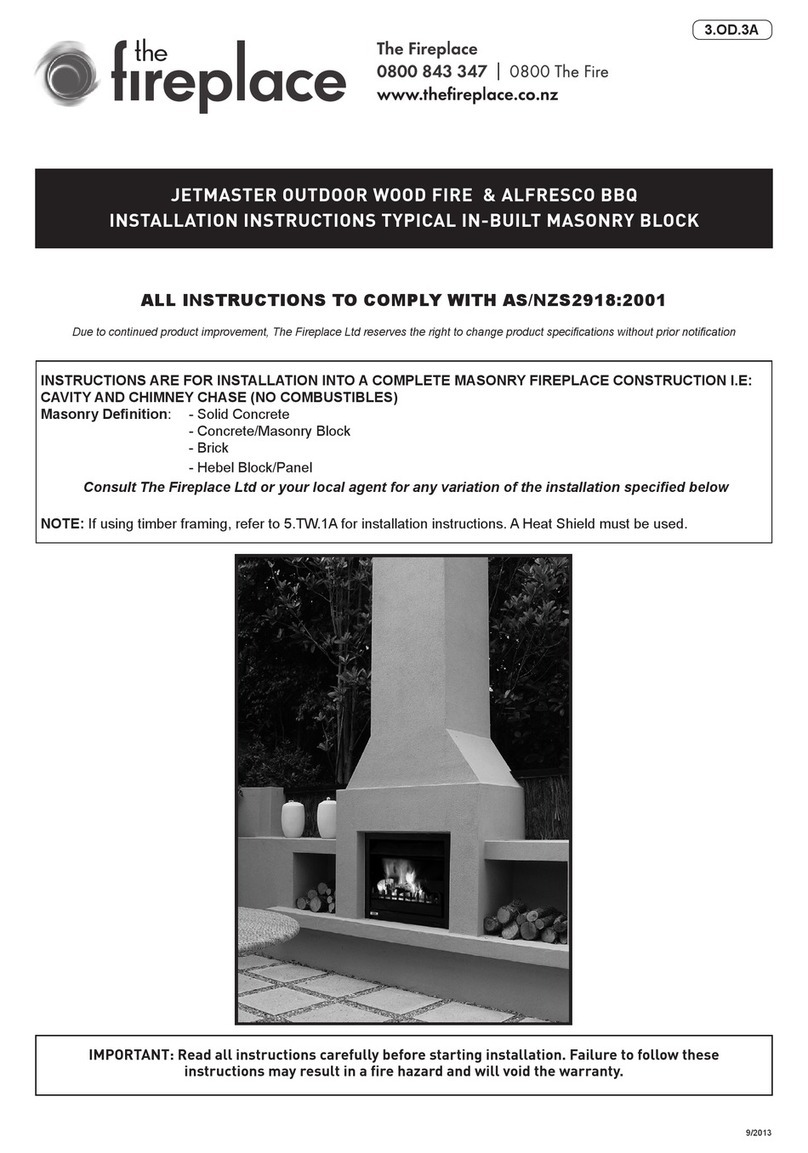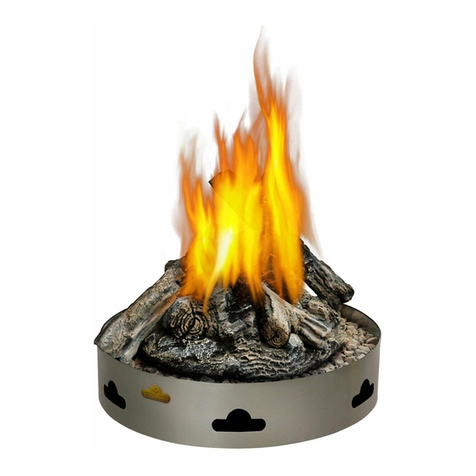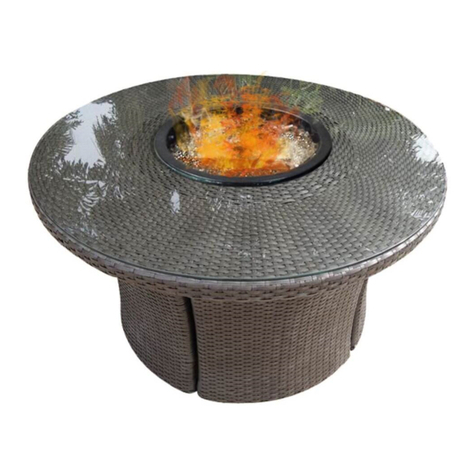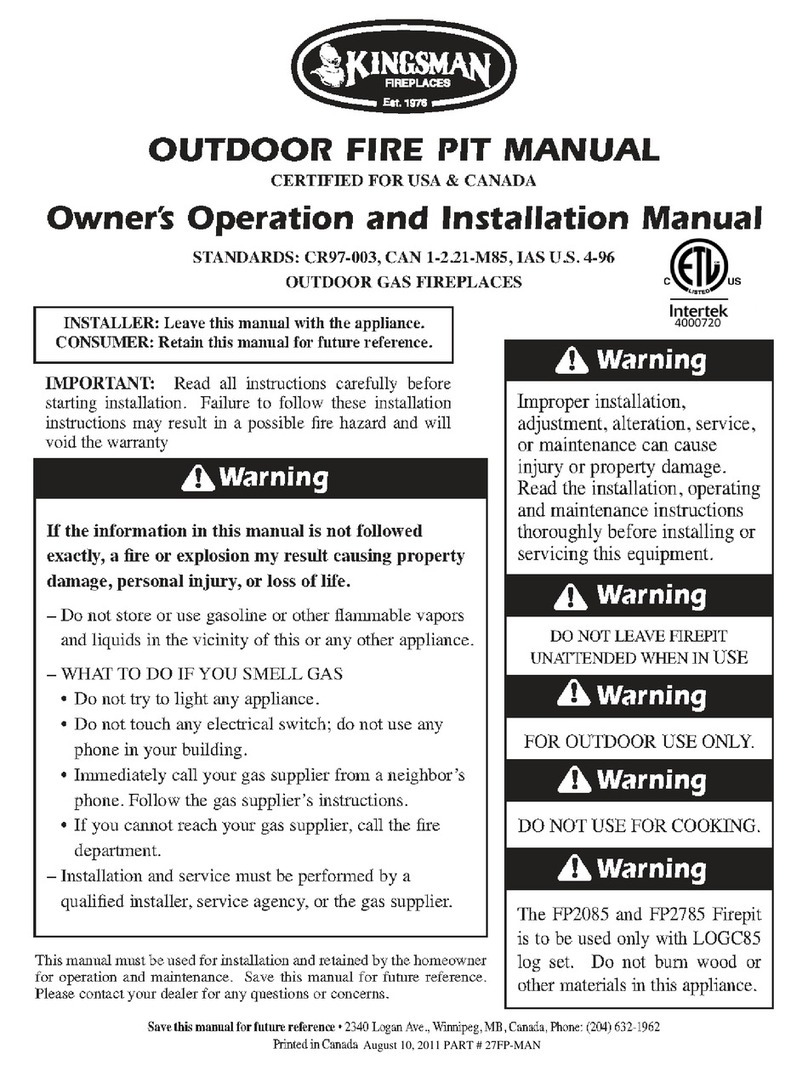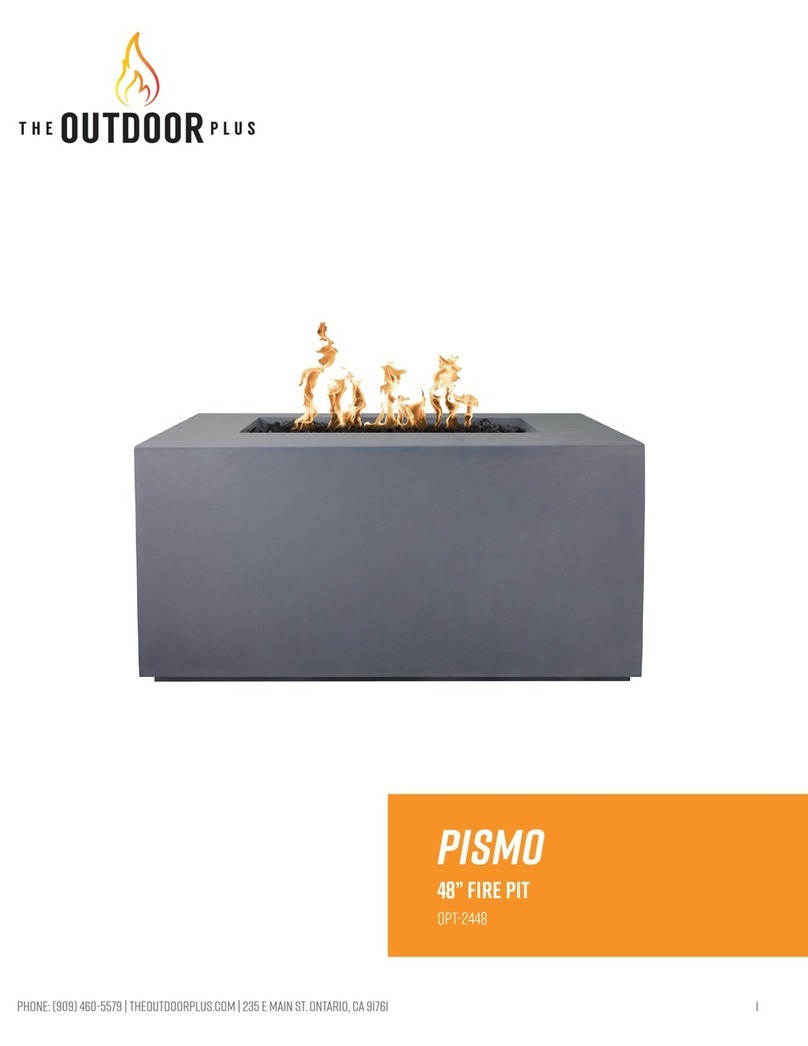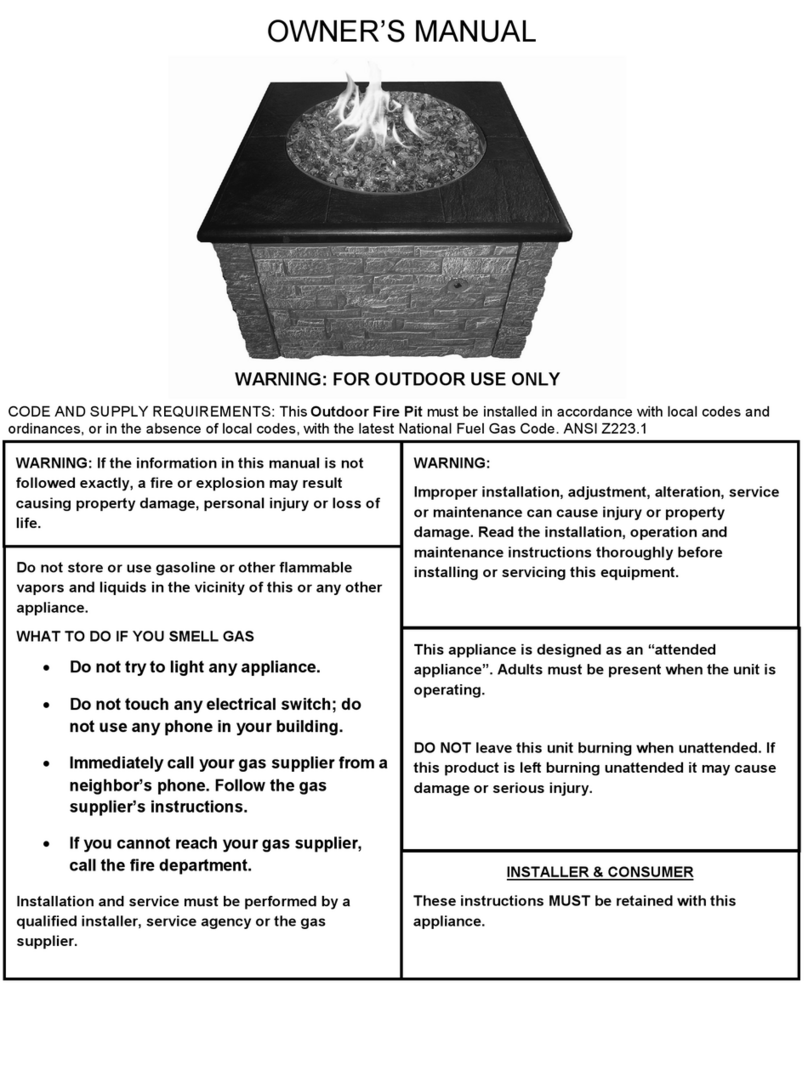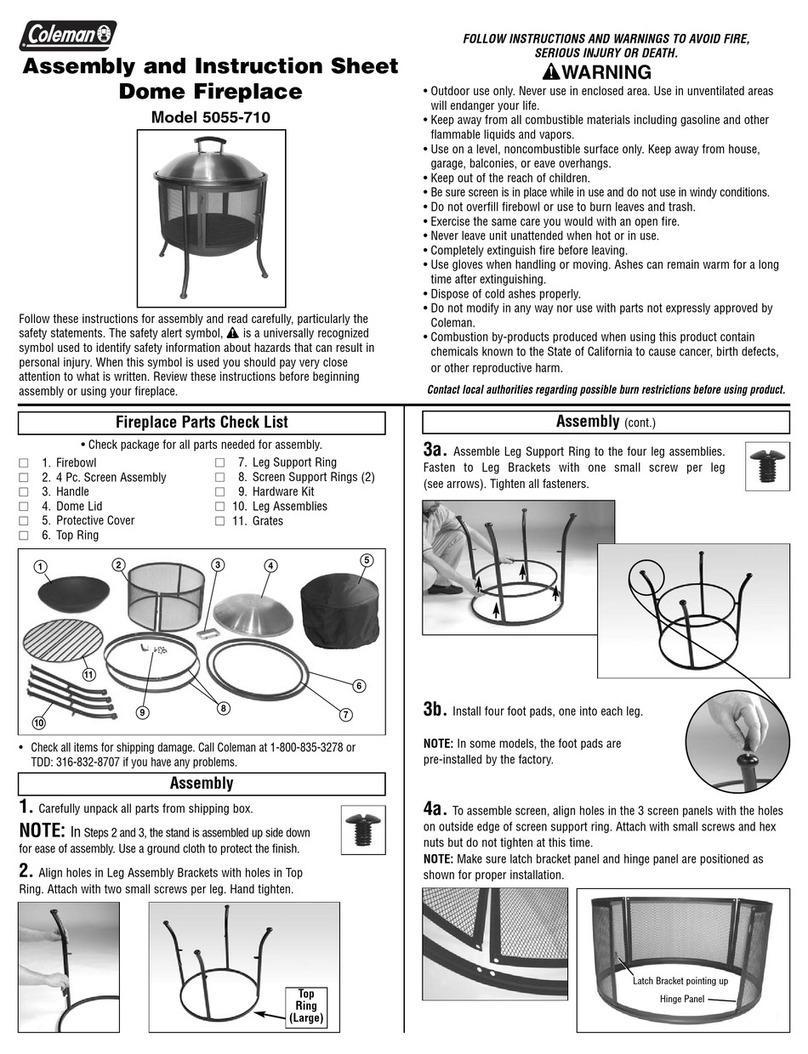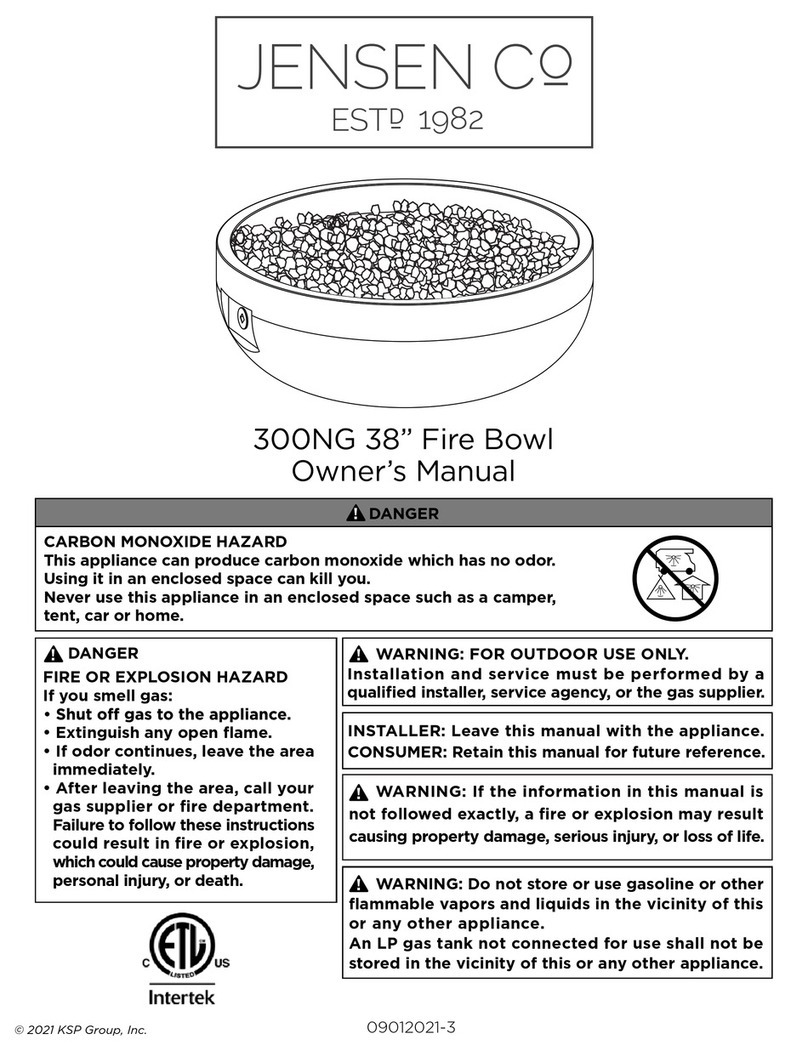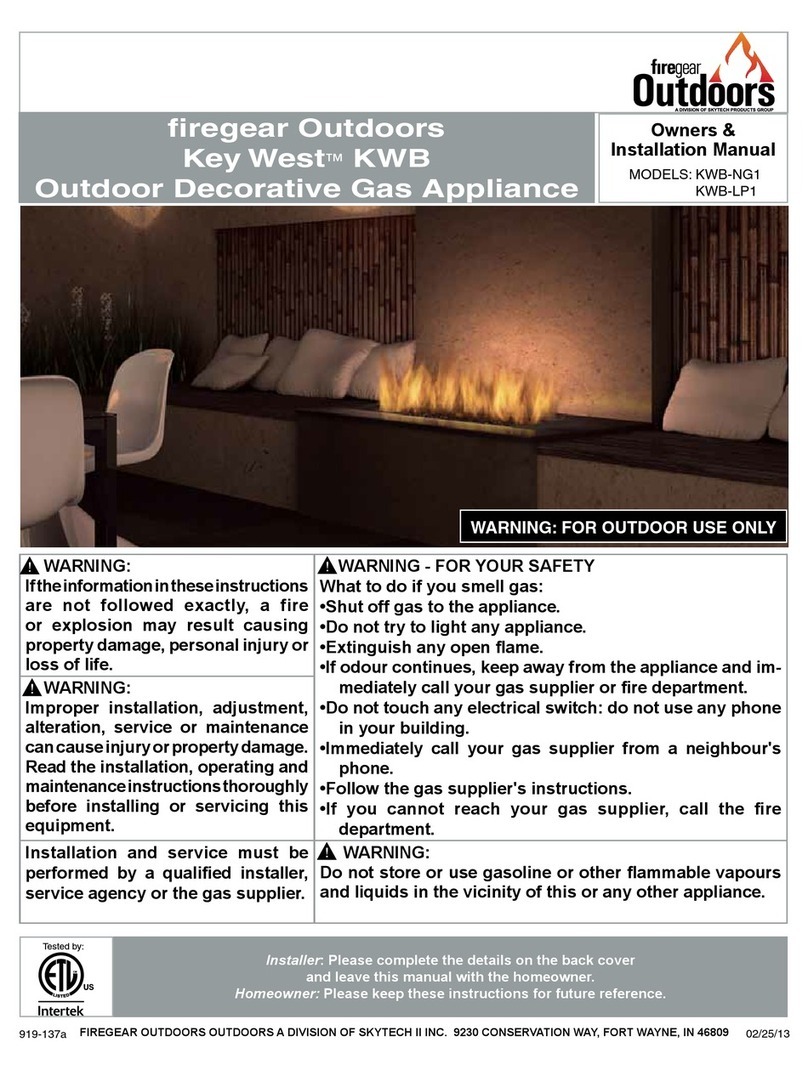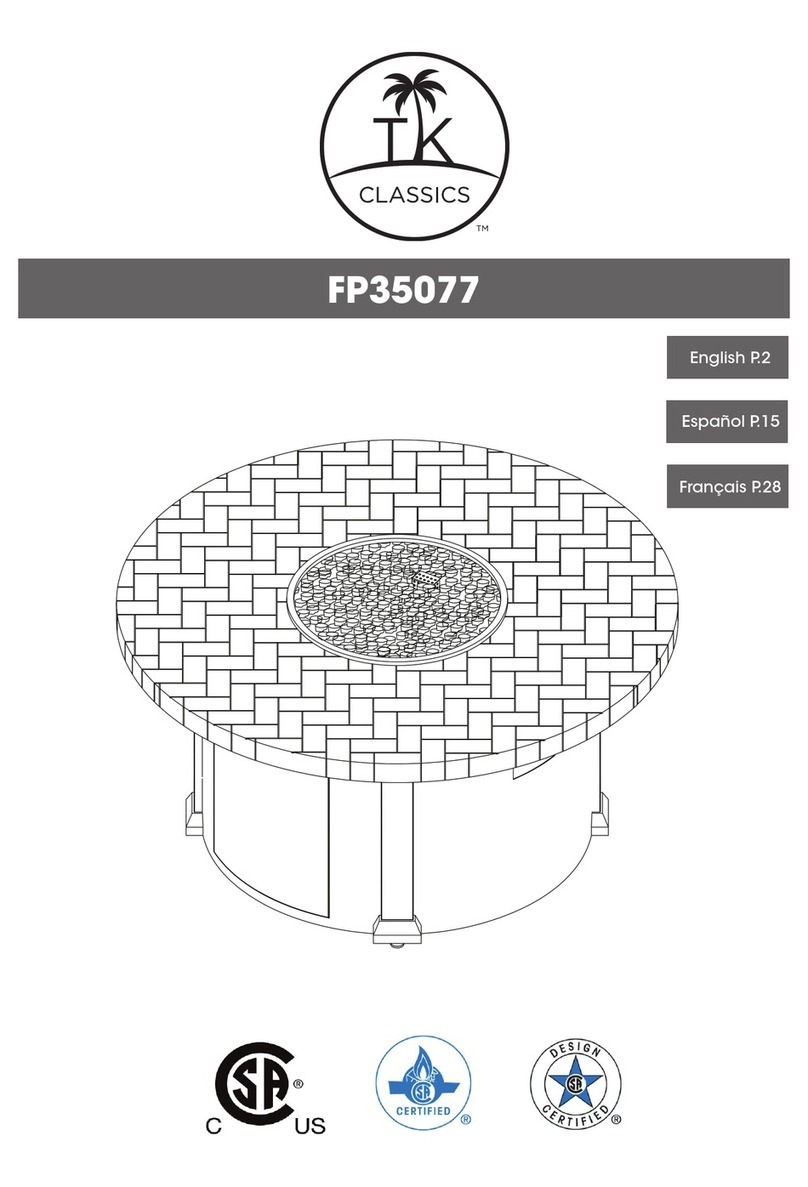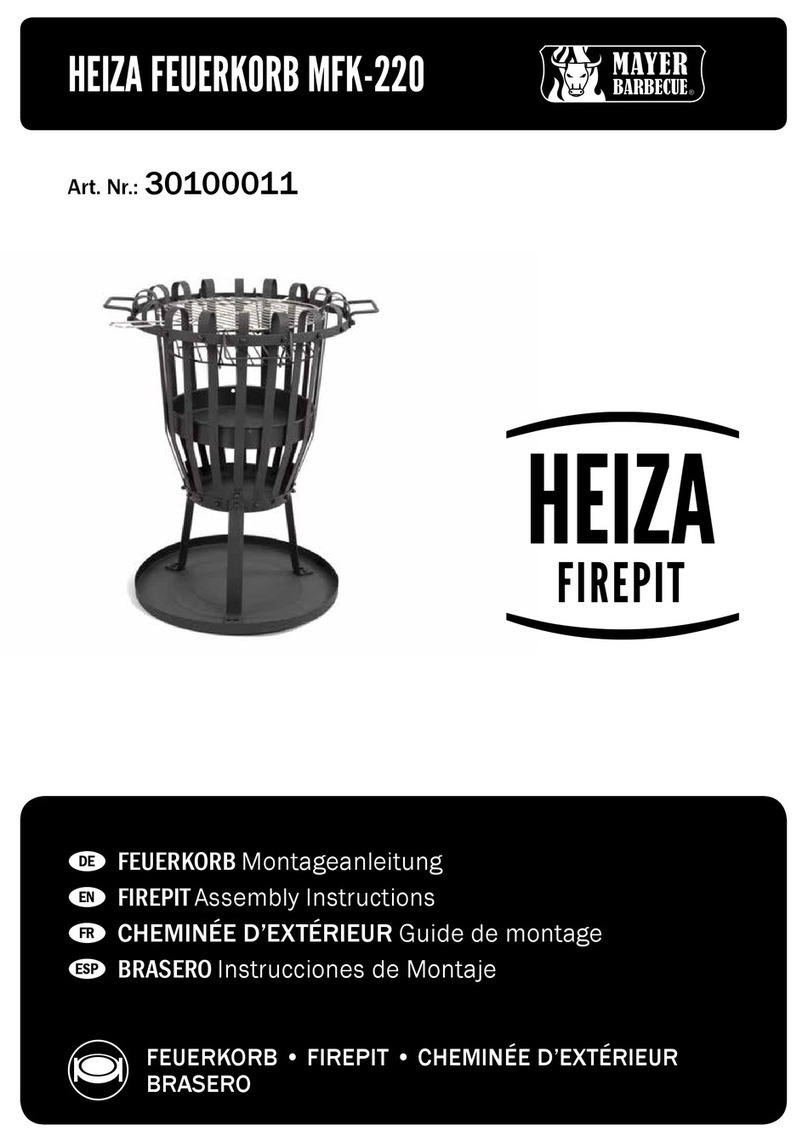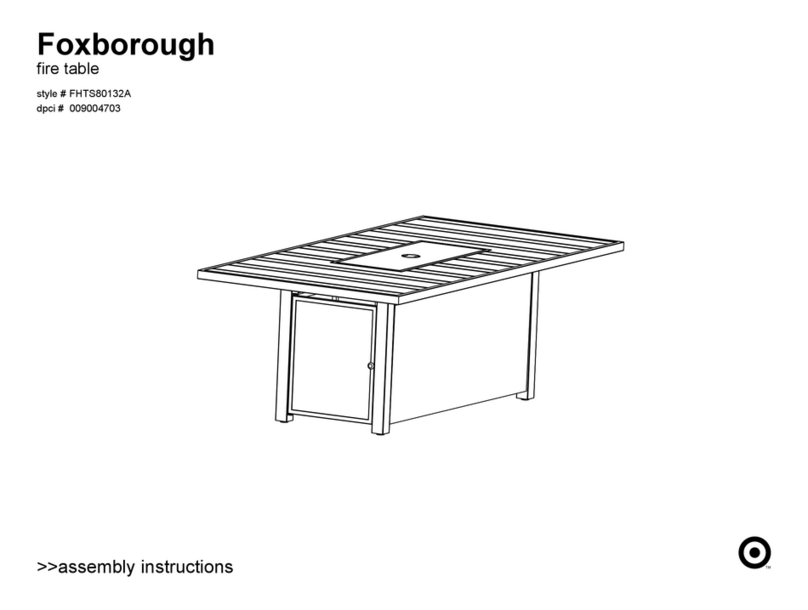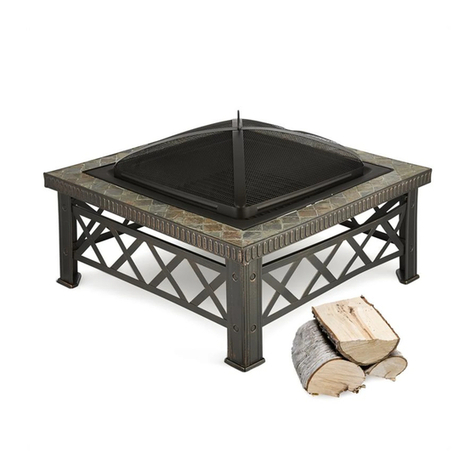
SAFE USE & MAINTENANCE OF PROPANE GAS BOTTLES
CYLINDER/CONNECTOR REQUIREMENTS
a.
Propane-gas cylinders, valves, and hoses must be
maintained in good condition and must be replaced if
thereis visible damagetoeitherthe cylinder or valve.If the
hose is cut or shows excessive abrasion or wear, itmust
be replaced before using the gas appliance (seee.).
b.
This unit,when used witha cylinder,shouldbeconnected
to a standard 5-gallon (20 lb.) propane-gas cylinder
The OPD has been required on all cylinders sold since
c.
Cylinder dimensions should be approximately 12" (30.5
cm) in diameter and 18" (45.7 cm) high. Cylinders must
be constructed and marked in accordance with the
DepartmentofTransportation(D.O.T.) or the National
Standard of Canada, CAN/CSA-B339, Cylinders,
Spheres, and Tubes for Transportation of Dangerous
Goods.
d.
The cylinder used must include a collar to protect the
cylinder valve, and the cylinder supply system must be
arranged for vapor withdrawal.
e.
The pressure regulator and hose assembly (Fig. 7-1)
supplied with this outdoor-cooking gas appliance must
be used. Original and replacement pressure regulator
manufacturer for connection with a cylinder connecting
ed as Type.
f.
The propane-gas cylinder valve must be equipped with a
cylinder connection coupling device, described as Type
e. above. This
device is commonly described as an Acme thread quick
coupler.
g.
If thepropane-gas cylinder comes with a dust plug,place
The use of pliers or a wrench should not be necessary. Only
cylinders marked “propane” may be used.
To disconnect: Turn the hand nut counterclockwise until
detached (Fig. 7-1).
Important: Before using the unit, and after each time the
cylinder is removed and reattached, check
the hose for wear (see a.) and check all
connections for leaks.Turnoff the unit valves
andopen the main cylinder valve, thencheck
connections with soapy water. Repair any
leaks before lighting the unit.
CAUTION: Always turn the propane cylinder main valve
off after eachuse,andbeforemovingtheunit
and cylinder or disconnecting the coupling.
This valve must remain closed and the
cylinder disconnected while the appliance
stoppedbyasafetyfeaturewhen thecoupler
is disconnected.
Carefully inspect the hose assembly each time before the
gas is turned on. A cracked or frayed hose should be replaced
immediately.
If the appliance is stored indoors, the cylinder must be
disconnected and removed. Disconnected cylinders must be
stored outdoors, out of the reach of children, with threaded
valve plugs tightly installed, and must not be stored in a
building, garage, or any other enclosed area.
FOR YOUR SAFETY
a.
DO NOT store a spare propane-gas cylinder under or
near this appliance.
b.
ll the cylinder beyond 80-percent full.
c.
IFTHEINFORMATIONINa. ANDb. ISNOTFOLLOWED
EXACTLY, A FIRE CAUSING DEATH OR SERIOUS
INJURY MAY OCCUR.
Fig. 7-1 Type I Acme thread quick coupler
the dust cap on the cylinder valve outlet whenever the
cylinder is not in use.
QUICK COUPLER OPERATION
QCC
Type 1
valve
Pressure
Hand wheel
U
Brass Acme
tting
Regulator
To connect the regulator/hose assembly to the propane-
tting:Pressthehandnutontheregulator
ttingonthecylindervalve.Turnthehand
nut clockwise to engage the threads and tighten until snug.
LEAK TEST
relief
valve
L
Liquid level
indicator
(optional)
Hand nut with Acme
thread
Vent
Hose
Turn on the gas supply, ignite the burner, and test at all
connectionsforleaksusing a soapywatersolution.If bubbles
appear, a leak is present. Turn off the gas and tighten at all
connections. Repeat until no leaks are present. If a leak
persists, turn off the gas supply and contact the local gas
companyordealer.NEVER USE AFLAME TO CHECK FOR
LEAKS.
Use LP propane gas tanks only with
these required measurements:
12 in. (diameter) x 18 in. (tall) with 20 lb.
capacity maximum.
IMPORTANT FOR YOUR SAFETY
READ AND FOLLOW ALL WARNINGS PROVIDED WITH THE PROPANE-GAS CYLINDER.
When operating this appliance with a propane-gas cylinder, these instructions and warnings MUST be observed.
FAILURE TO DO SO MAY RESULT IN A SERIOUS FIRE OR EXPLOSION.
